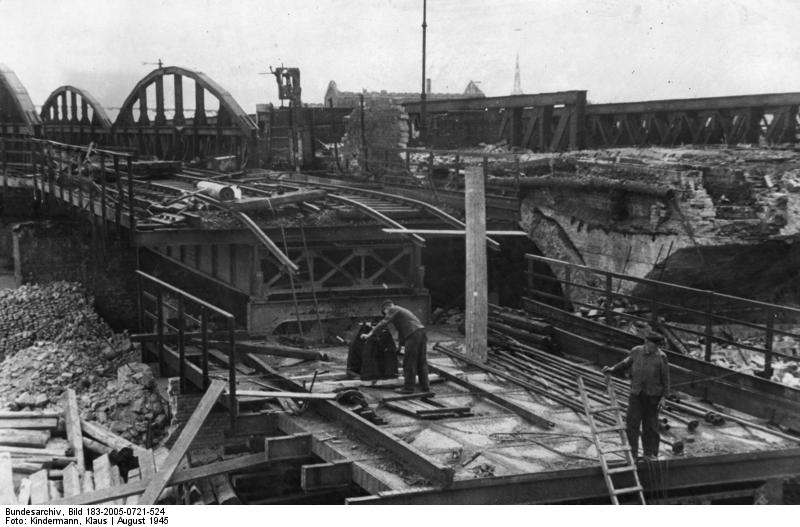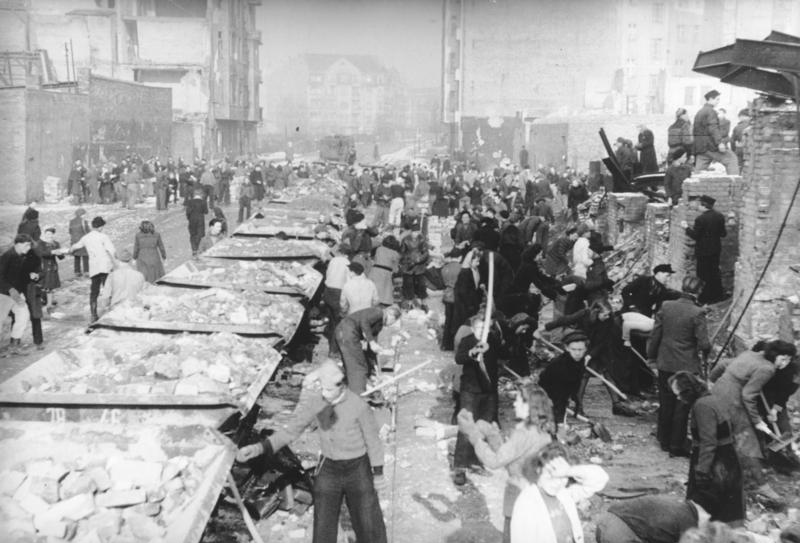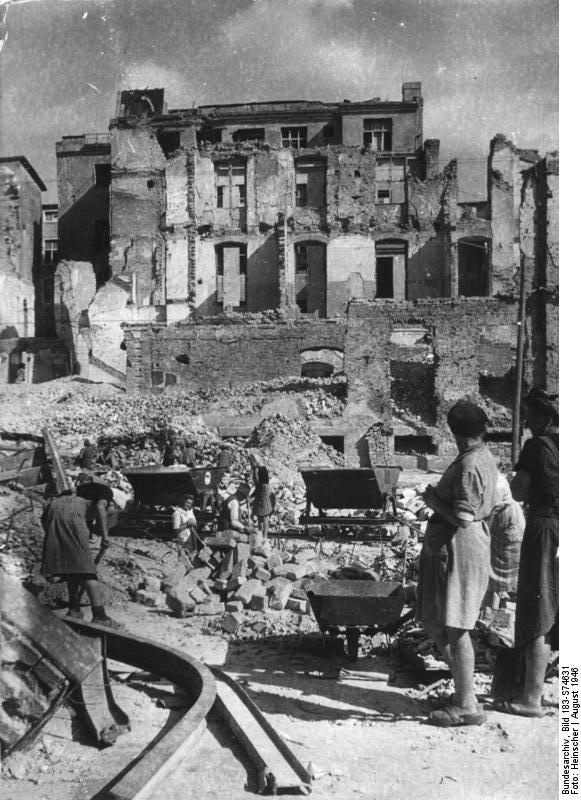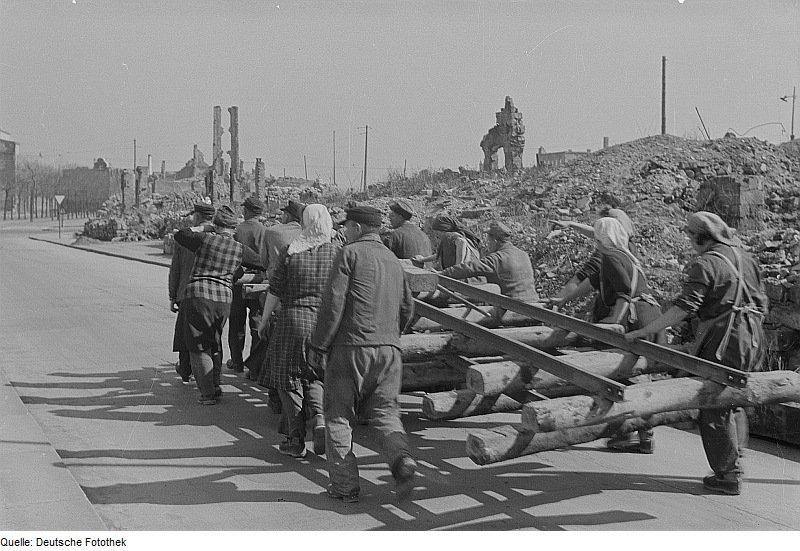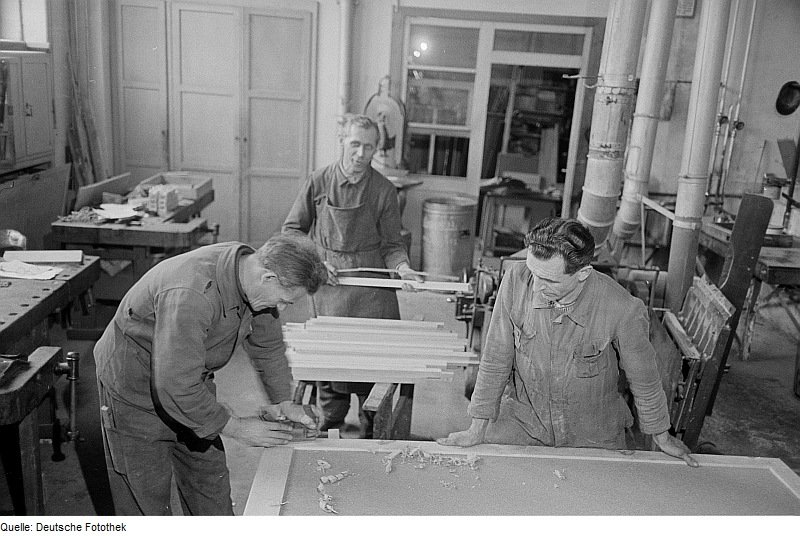Interview with Professor Jeffrey Diefendorf
Jeffrey Diefendorf has written several books about the reconstruction of both Germany and Japan after World War II. The Pamela Shulman Professor in European and Holocaust Studies at the University of New Hampshire, he has looked at the way planning shaped the rebuilding of post-conflict societies. He is the author or editor of eight books, including In the Wake of War: The Reconstruction of German Cities after World War II, The Rebuilding of Europe’s Bombed Cities, Rebuilding Urban Japan after 1945, and Transnationalism and the German City.
His work on Germany examines how the country managed an extremely rapid urban regeneration in a decentralised manner. Different cities approached the problems in various ways, often depending on how their planning departments functioned before the war. In the longer-term, one issue has become clear. Those cities that used the historic street plans and maintained traditional urban density have become more attractive places that those that opened up urban space in a modernist way.
Professor Diefendorf is currently looking at whether cities that are destroyed in civil wars recover in different ways to those damaged by inter-state conflict.
What was the impact on planning on reconstruction in Germany?
People who own properties wanted to restore them straightaway after they had been damaged. During the bombing people were restoring businesses and homes immediately. But planners often wanted to change things. They wanted to build large new streets to accommodate traffic. Much depended on the political structures in towns and whether or not they could enforce issues like this. Planners wanted to change cities. In Cologne, after the war, Konrad Adenauer (later the chancellor of the Federal Republic) wanted to broaden the streets around the Cathedral but most of the residents said no and rejected this idea. Their narrow width was part of the character of those streets and that neighborhood. These are important issues for cities to consider. How much should be determined by automobiles and parking?
When did thinking about reconstruction start in Germany?
Thinking began rather early in part because prior to the war Adolf Hitler wanted to see many cities transformed. He wanted to open up large areas for political demonstrations. He wanted to see cities modernised with wide streets for automobiles and the construction of skyscrapers. So in many cities you had planners – not just in Berlin but in Hamburg and elsewhere – that were starting to think about these things before the war. When the bombing started they were thinking that it provided them with a way to implement modernisation plans in an easier way. That was not the way it worked out. Cities after the war said they needed planners to help them recover but they didn’t want planners who were in favour of Nazi ideas. They didn’t want planners from other cities telling them to transform their cities.
Another issue that makes Germany different from say Japan or the Soviet Union is that they didn’t have a national government in Germany until late 1948/1949 . So you didn’t have a situation where you had a national capital telling cities how to rebuild. That was the case in Japan and the Soviet Union. Often the attitude was that the national government would determine how reconstruction was done. They told cities: “If you do it in our way we will provide funding.” Many cities needed money to recover so they followed their national governments. In Germany there wasn’t a national government doling out instructions and money. They had to let local people rebuild on their own. For example, many churches rebuilt by raising money themselves from their congregations. That made the situation for reconstruction in Germany somewhat different.
It has become something of a cliché that the Marshall Plan paid for rebuilding but that was not true. The Marshall Plan did not come in until late 1948 and 1949. And the point of the plan was to rebuild economies and not cities. They did use some money to rebuild West Berlin and that was for political reasons as the Americans saw it as a statement — a capitalist city in the middle of the communist East. The Marshall Plan has become an international cliché whenever cities are damaged in war. But it didn’t apply to most reconstruction in Germany. Individuals borrowed money, often from relatives in the country, and that is where they also found building materials. It was never centrally managed.
What were the implications of local management?
In many places, people were trying to define and maintain local urban identities. To give you an example, in Munich, initially the planners, based on ideas talked about during the war, had a proposal to build a large traffic artery through Munich, right in front of the city hall. A big popular movement protested against that and what you ended up with was a big pedestrian zone and people are generally happy about that. Should you have places for pedestrians or just automobiles? Some of the planners favoured the creation of lots of traffic arteries and when this was raised it was generally opposed. In Dusseldorf, a traffic artery was built through the city even though many objected.
Planners came up with plans and held exhibitions. Many people would come and look and many objected to plans to modernise their cities. In many places they won and in many places they did not as this was a local function.
People praise cities that have a strong local identity. That is why you want to visit a particular city. They don’t want every city to look like New York or somewhere else. That’s an issue in Frankfurt. Since it is a centre for banking there was a need for modern office space. But people urged them to build them on the fringes of the city and not in the Old City.
How did German’s clear the rubble from their cities so effectively?
During the war, in many cities, they used prisoners of war and prisoners in concentration camps to clear out and haul away rubble. That became a long-standing embarrassment as many cities did not want to admit what had been done by local governments. But in the archives there are photographs in which there are concentration camp inmates carrying away fallen stones and bricks.
The government put a lot of emphasis on clearing away rubble during the war as the Nazis were telling everyone that they were going to win right up until 1944. To show that they would win, they wanted to clear up rubble straight away. That was not the case in the Soviet Union or in Poland. That sort of optimism did not exist elsewhere. Occupied countries did not have local governments who were doing that.
After the war the Germans also figured out how to organise and do things quite quickly. Huge numbers of women were organised to clear away rubble. Many men had been killed or were prisoners of war. Right after the war, local governments were encouraged by the occupying forces to require members of the Nazi Party to clear rubble.
Professionalising the removal of rubble became quite controversial. Contractors who had been building roads in occupied areas returned from those places and started doing rubble clearance after the war. In many cases, towns took them up on this as they had the heavy equipment and the skills. But, in many cases there were objections to Nazi-linked companies coming in and doing clearance.
In many badly damaged cities such as Berlin and Hamburg, people collected bricks and stones to be reused but they lacked the skilled labour to rebuild. In East Germany they mostly said it was pointless trying to rebuild with old materials and therefore moved to modern materials like pre-cast concrete. The lack of skilled workers really shaped the reconstruction process. The Bauhaus (the modernist design school in Dessau, closed under the Nazis) was also very influential in calling for the use of new materials. The issue of labour shortages is a potential problem in Aleppo—will they be able to find enough skilled workers to repair buildings or will they have to say that something has been too damaged and will have to be forgotten about?
How was Berlin rebuilt after the war?
Berlin is physically a very large city and there were people who after the war just said let’s continue to modernise. But that is not always the case. In West Berlin they restored the bombed city hall and other symbolic buildings and they also tried to maintain some neighbourhoods like Charlottenberg. In East Berlin there were fewer opportunities to do that. There was much more of a tendency to modernise there. In recent years there has been a controversy about the old Berlin City Palace (the winter residence of the Prussian kings), which the East Germans demolished. They built a new modern building for their government. After the fall of the Berlin Wall that building was torn down. Now a new reconstruction of the palace is being built.
If one goes to parts of the East near the city centre you see how things are being destroyed. In the East there was more of a tendency to want to modernise because both the East Germans and Soviets wanted to create a new country that they saw as a leader in modern ideas.
What Germany got right in many places was to preserve key elements of urban identity such as in Cologne rebuilding the Romanseque churches, not just the old Gothic cathedral. Those kind of things have been vital in making cities like Munich or Cologne worth visiting. Lubeck has a sense of itself as an historic city, not something that is just brand new. That has been a really important thing that has been done. I haven’t visited many former East German cities. People pointed out in Leipzig there was a debate about reconstruction. Dresden has been historically restored. That has been an important part of the identity of that city even if they could not fully restore what they think of as the most important city of the German Renaissance. They did reconstruct the cathedral, which was paid for mostly by the British and foreigners. Re-establishing the historic character of cities has been vital. It has been important to say: “We don’t have to be brand new with parking lots etc. and a city based around automobiles.”
You read about ISIS demolishing ancient buildings and it will be interesting to see to what extent they are restored or rebuilt or will those parts of history be abandoned? After the fall of the Berlin Wall, the program began to rebuild the Hohenzollern palace in the east. They needed to rebuild because it was important for Berlin to have its historic structures. But it is vital to define what elements of architectural history are important. If you are going to restore a palace built by emperors why not restore Hitler’s Chancellery? Why restore one and not the other? There are many complex choices about what gets rebuilt and what does not.
How did Germany deal with buildings with histories of terror and violence?
Occupied forces required that buildings like the police building in Dusseldorf be stripped of Nazi symbols. The allies insisted on that. In Cologne there was a relatively small building that was the headquarters of the Gestapo where they killed and tortured people. In the 1970s, it was turned into a museum about Cologne in the Nazi era and they have small exhibits there and an archive and library. People can go there and find materials – it acknowledges that it was a Gestapo building.
That is something that is dramatically important about post-war Germany. It is a country that accepted collective responsibility for the horrors of the Nazi era. It wasn’t just Hitler and the SS that did these things. Germany did horrible things and this has been part of the rationale for providing help to the victims and their descendants.
 The Aleppo Project
The Aleppo Project